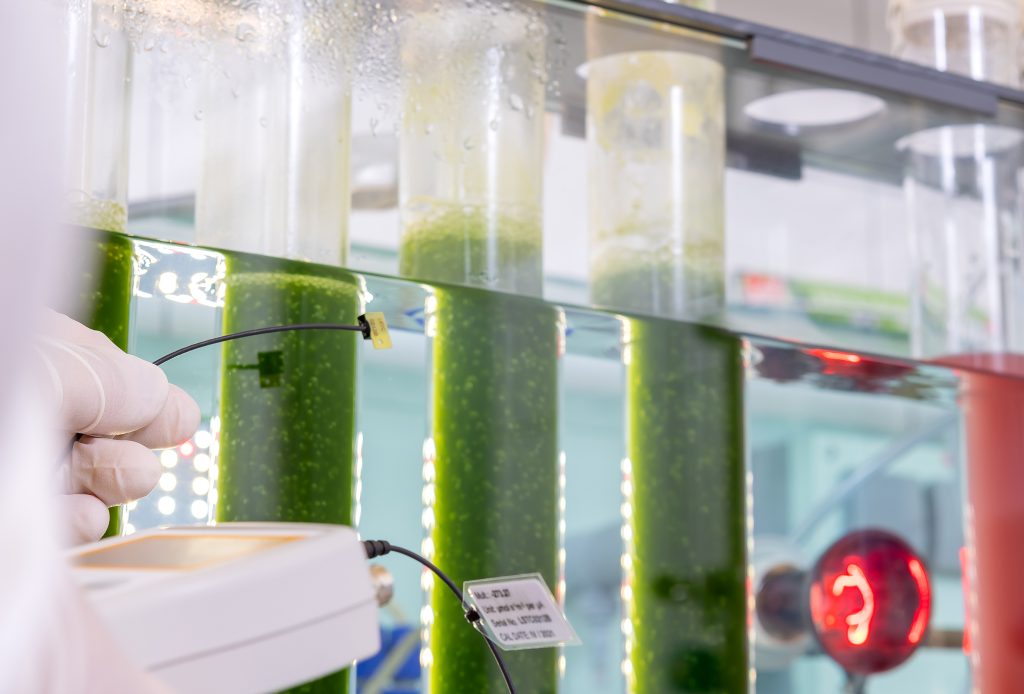Evaluating scaling of capillary photo-biofilm reactors for high cell density cultivation of mixed trophies artificial microbial consortia
Capillary biofilm reactors (CBRs) are attractive for growing photoautotrophic bacteria as they allow high cell-density cultivation. Here, we evaluated the CBR system’s suitability to grow an artificial consortium composed of Synechocystis sp. PCC 6803 and Pseudomonas sp. VBL120. The impact of reactor material, flow rate, pH, O2, and medium composition on biomass development and long-term biofilm stability at different reactor scales was studied. Silicone was superior over other materials like glass or PVC due to its excellent O2 permeability. High flow rates of 520 μL min−1 prevented biofilm sloughing in 1 m capillary reactors, leading to a 54% higher biomass dry weight combined with the lowest O2 concentration inside the reactor compared to standard operating conditions. Further increase in reactor length to 5 m revealed a limitation in trace elements. Increasing trace elements by a factor of five allowed for complete surface coverage with a biomass dry weight of 36.8 g m−2 and, thus, a successful CBR scale-up by a factor of 25.
